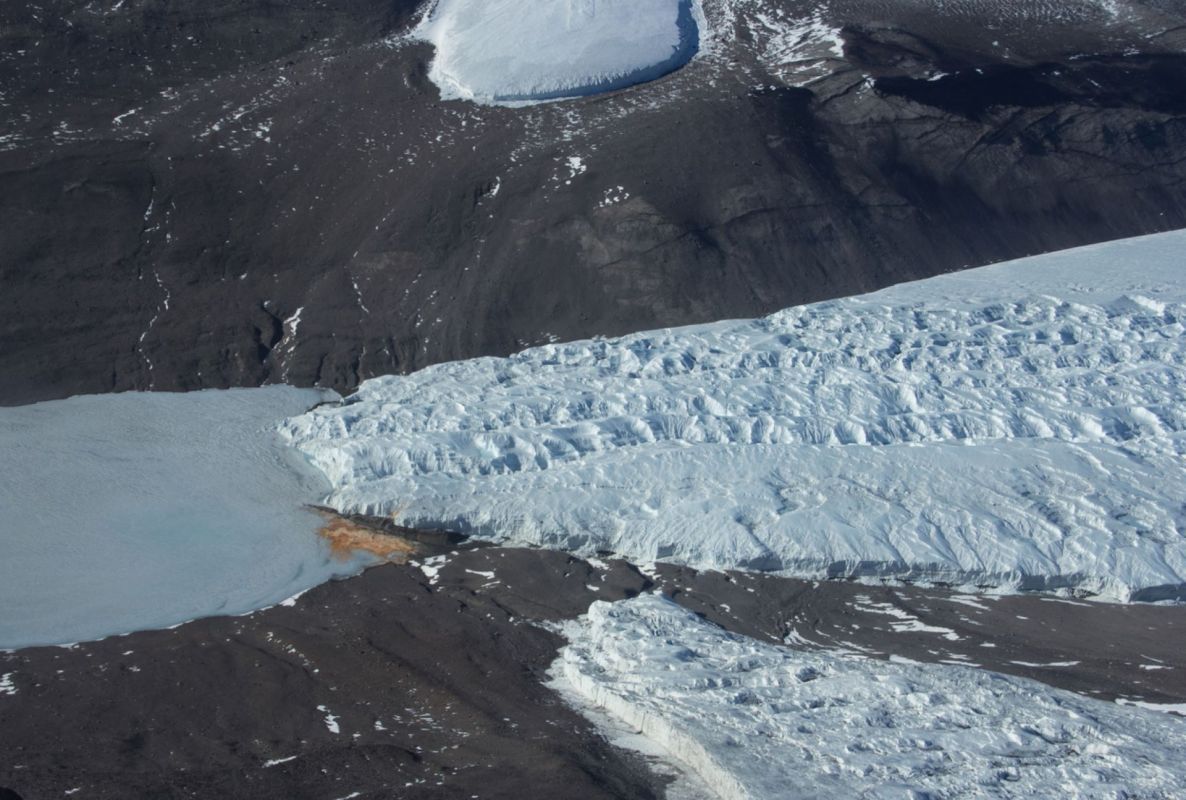Blood Falls is a glacier in Antarctica with a waterfall that runs mysteriously red, and the reason why has confounded scientists ever since it was first discovered by British scientist Thomas Griffith Taylor in 1911.
Until recently, the prevailing theory was that the water that feeds the waterfall is extremely iron-rich and hidden underground, so when it comes into contact with sunlight, it immediately rusts, giving it its red hue.
However, new research from a team of scientists at Johns Hopkins found that while that is part of the explanation, what's really going on with the glacier is even more fascinating.
Research scientist Ken Livi, who co-authored a new study on Blood Falls after analyzing some of the water using transmission electron microscopes at Hopkins' Materials Characterization and Processing Facility, explained: "As soon as I looked at the microscope images, I noticed that there were these little nanospheres and they were iron-rich, and they have lots of different elements in them besides iron — silicon, calcium, aluminum, sodium — and they all varied."
While previous methods of analyzing Blood Falls' water focused on the minerals contained therein, nanospheres are minuscule — 100 times smaller than red blood cells — and therefore went undetected.
That means that the nanospheres in the underground lake underneath Blood Falls are life forms that have previously been undiscovered.
"There are microorganisms that have been existing for potentially millions of years underneath the saline waters of the Antarctic glacier. These are ancient waters," Livi explained.
For that reason, the scientists became interested in analyzing the nanospheres in the same way that the Mars Rover analyzes samples to find evidence of alien life. This research revealed that even the Mars Rover isn't prepared to analyze these tiny nanospheres.
"Our work has revealed that the analysis conducted by rover vehicles is incomplete in determining the true nature of environmental materials on planet surfaces. This is especially true for colder planets like Mars, where the materials formed may be nanosized and non-crystalline. Consequently, our methods for identifying these materials are inadequate," Livi said.
While disappointing, the implications here are still very interesting — if the Mars Rover is incomplete in its analysis, the reason that it has not yet found evidence of alien life on Mars might not be that the life doesn't exist, but rather that our science is not yet advanced enough to identify it.
Join our free newsletter for cool news and cool tips that make it easy to help yourself while helping the planet.









